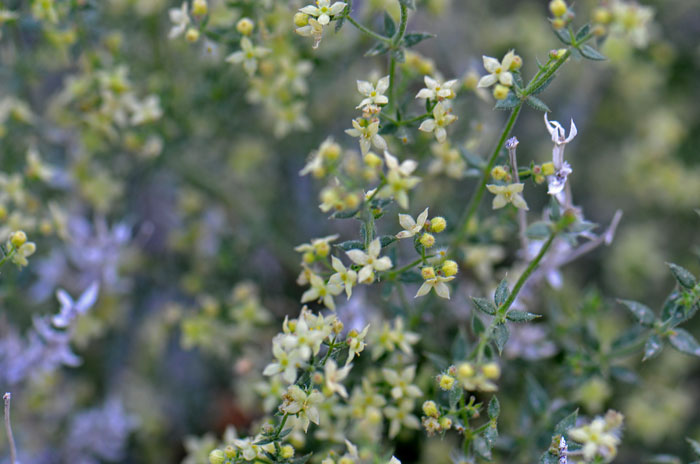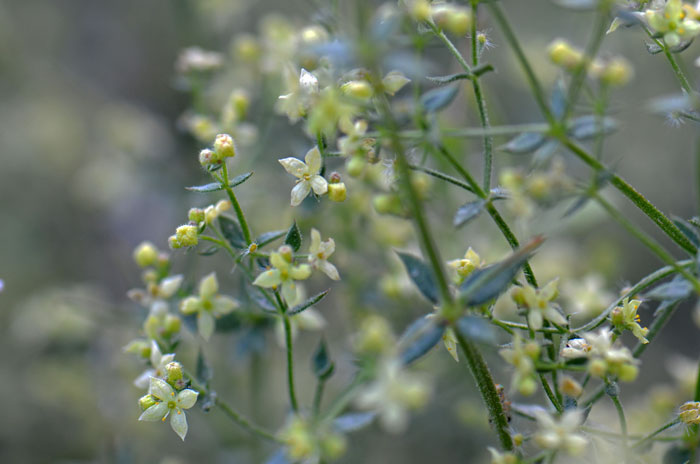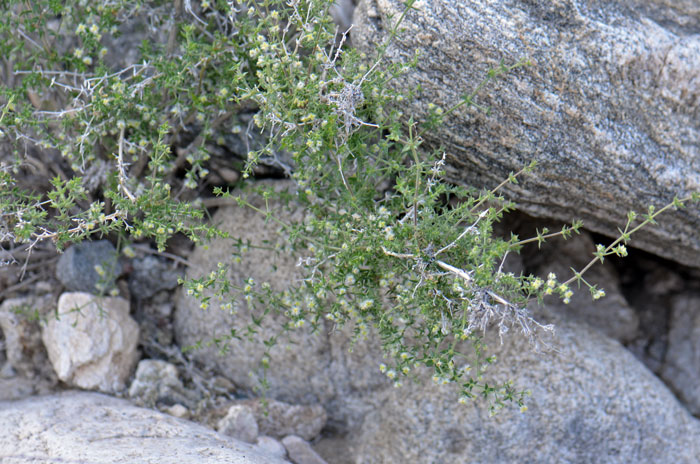Galium stellatum, Starry Bedstraw




Scientific Name: Galium stellatum
Common Name: Starry Bedstraw
Also Called: Bedstraw, Desert Bedstraw
Family: Rubiaceae, Coffee, Madder or Bedstraw Family
Synonyms: (Galium acutissimum)
Status: Native
Duration: Perennial
Size: Up to 2 feet or more.
Growth Form: Subshrub, forb/herb; erect; dioecious; scabrous or hispidous; shrubby, plants suffrutescent; branches spreading; stems brittle.
Leaves: Green, green-gray; lanceolate to ovate; leaves in whorls of 4; leaf tips sharp to the touch.
Flower Color: White or whitish; flowers star-shaped, flowers few to many; in panicles from axils; corolla rotate; pedicels erect or ascending; fruit is a nutlet with small dense white silky hairs.
Flowering Season: January to May; March to April in California.
Elevation: Up to 3,000 feet; 500 to 5,500 feet in California.
Habitat Preferences: Common, dry rocky slopes.
Recorded Range: Galium stellatum is common where found but relatively rare in the southwestern United States in AZ, CA, NV, UT. Starry Bedstraw is also native to Baja California and northwest Mexico. In Arizona it is found in the western ½ of the state and Graham County. Bullhead City, Arizona on the Lower Colorado River, appears close to the population center for this species.
North America & US County Distribution Map for Galium stellatum.
U.S. Weed Information: No information available.
Invasive/Noxious Weed Information: No information available.
Wetland Indicator: No information available.
Threatened/Endangered Information: No information available.
In Arizona there are 14 species of Galium, in California there are 47 species, Nevada has 19 species, New Mexico has 13 species, Texas has 21 species, Utah has 18 species. All data is approximate and subject to taxonomic changes.
There is 1 sub-species in Galium stellatum;
Galium stellatum subsp. eremicum, Starry Bedstraw (AZ, CA, NV, UT).
Comments: Starry Bedstraw is not an attractive plant, often shrubby and messy in appearance and so it is often over-looked and somewhat inconspicuous.
Also see in Southwest Desert Flora, Common Bedstraw, Galium, aparine.

